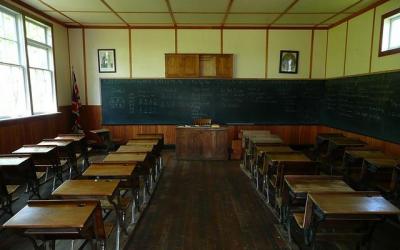DACTILOPINTURA PARA EL DESARROLLO DE LA MOTRICIDAD FINA EN NIÑOS DE 4 A 5 AÑOS
DACTILOPINTURA FOR THE DEVELOPMENT OF FINE MOTOR IN CHILDREN FROM 4 TO 5 YEARS OLD
DOI: https://doi.org/10.51896/caribe/GTTC7720
Fecha recibido: 10/12/2021 | Fecha publicado: 29/04/2022 | Fecha corregido: 25/02/2022 |Autores
RESUMEN
El presente trabajo, tuvo como objetivo principal analizar la influencia de la dactilopintura, para el desarrollo de la motricidad fina en los niños y niñas de 4 a 5 años de la Unidad Educativa Dr. Andrés F. Córdova de la ciudad de La Concordia, provincia Santo Domingo de los Tsáchilas; donde se se observó el poco interés de incorporar la técnica de la dactilopintura en el proceso de enseñanza-aprendizaje, lo cual disminuye la posibilidad de desarrollar la motricidad fina en los infantes con actividades innovadoras. Mediante una investigación bibliográfica se identificaron los beneficios de la dactilopintura. Con el enfoque cualitativo y cuantitativo, aplicando el método analítico-sintético se trabajó con la aplicación de las técnicas de la entrevista y la encuesta aplicada a una muestra probabilística aleatoria de docentes y estudiantes de la institución, determinando la importancia de incorporar una guía didáctica sobre esta técnica dando al docente la posibilidad de mejorar el proceso de enseñanza-aprendizaje con actividades innovadoras. Los resultados demostraron que el conocimiento sobre los beneficios de la dactilopintura de los padres de familia dio como derivación que apenas el 48% de los padres de familia conoce los beneficios que el niño tiene al momento de pintar con sus dedos y manos por lo que los infantes presentan un desarrollo motriz con leves dificultades considerando que las clases en la actualidad, debido a la pandemia del Covid 19 son en modalidad virtual y se puede interpretar que las estrategias pedagógicas aplicadas por los docentes para estimular el ámbito motriz fino se basan en la ejecución de las técnicas didácticas con materiales como las témperas, que enriquecen la creatividad y fomentan la coordinación óculo-manual de los niños.
Palabras clave: Dactilopintura, motricidad fina, desarrollo, técnicas.
DACTILOPINTURA FOR THE DEVELOPMENT OF FINE MOTOR IN CHILDREN FROM 4 TO 5 YEARS OLD
ABSTRACT
The main objective of this work was to analyze the influence of finger painting for the development of fine motor skills in children aged 4 to 5 years of the Dr. Andrés F. Córdova Educational Unit in the city of La Concordia, province Santo Domingo of the Tsachilas; where little interest was observed in incorporating the finger-painting technique in the teaching-learning process, reducing the possibility of developing fine motor skills in infants with innovative activities. Through one bibliographical research, the benefits of finger painting were identified. With the qualitative and quantitative approach, applying the analytical-synthetic method, we worked with the application of the techniques of the interview and the survey applied to a random probabilistic sample of teachers and students of the institution, determining the importance of incorporating a didactic guide on this technique giving the teacher the possibility of improving the teaching-learning process with innovative activities. The results showed that the parents' knowledge about the benefits of finger painting gave as a derivation that only 48% of the parents know the benefits that the child has when painting with their fingers and hands, so the infants present motor development with slight difficulties considering that classes today, due to the Covid 19 pandemic, are in virtual mode and it can be interpreted that the pedagogical strategies applied by teachers to stimulate the fine motor field are based on the execution of teaching techniques with materials such as temperas, which enrich creativity and encourage hand-eye coordination in children.
Keywords: Fingerprint, fine motor skills, development, techniques.


